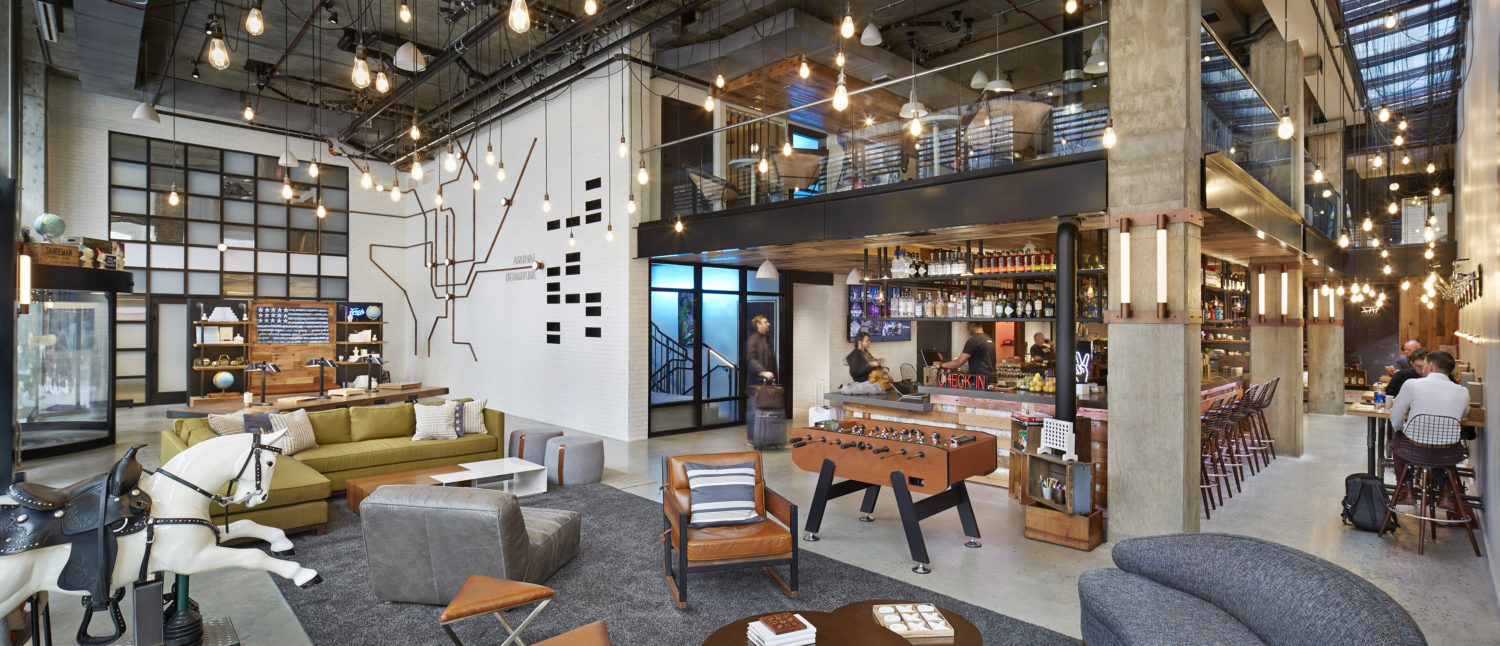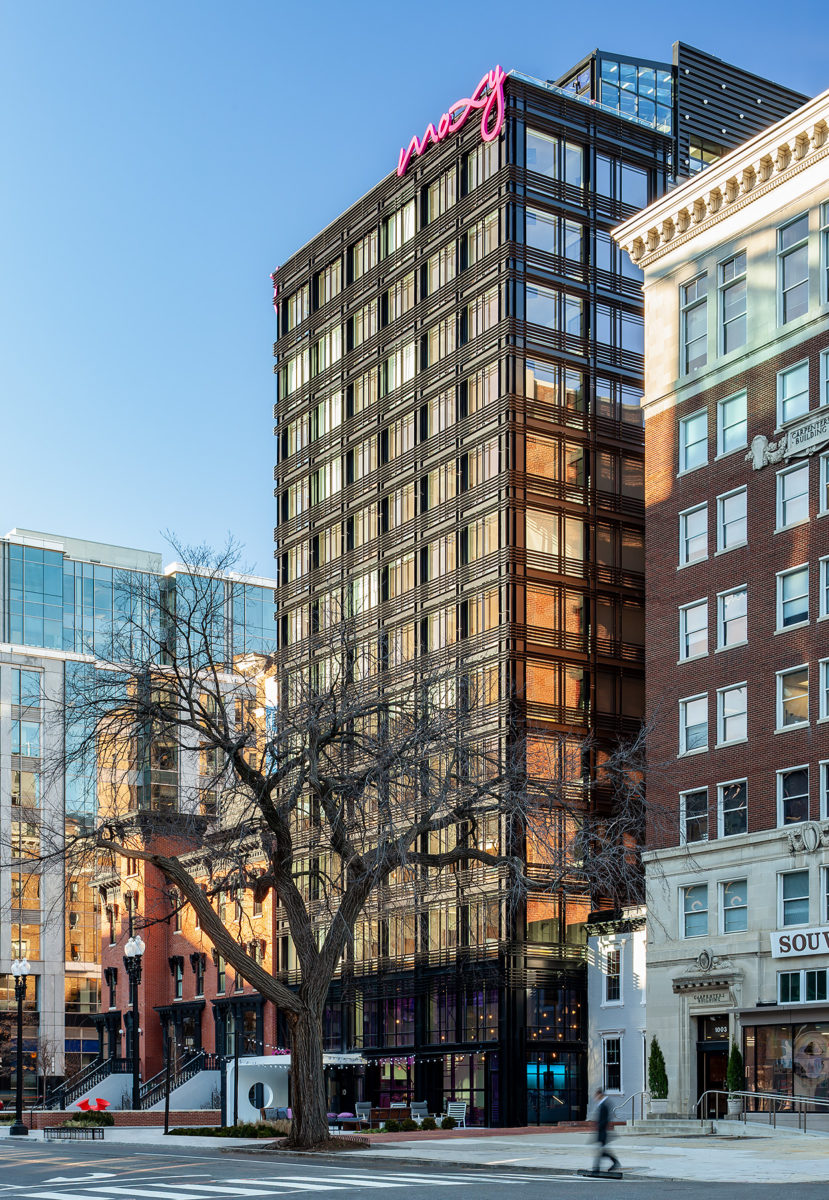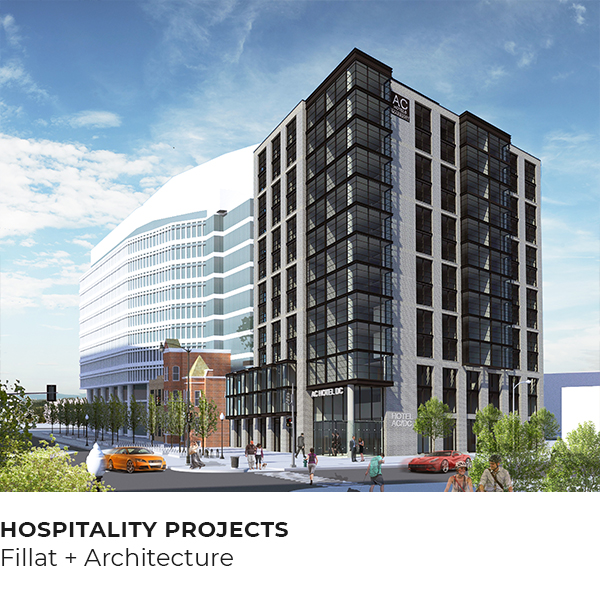September 22nd, 2021
Sustainability is arguably the top consideration for construction professionals in 2021. With that said, durability–the ability of a material to maintain its appearance and perform as intended over time and in the face of wear and tear–is one of the key components of ensuring sustainable construction. The following breakdown looks at some of the most sustainable and durable building materials on the market and how they can be incorporated into contemporary commercial buildings.
Architectural Grilles
Image of Moxy DC by Ron Blunt
Many modern commercial buildings feature large windows to leverage the benefits of natural sunlight and reduce the reliance on artificial energy. While there are many benefits to this approach, there can be times during the height of summer when too much sunlight is a detriment. Furthermore, in locations where the view is less-than-flattering, a visual buffer could be a welcome addition.
To help remedy these issues, architectural metal grilles can be installed around a commercial building to provide a creative facade. As an example in modern architecture, the Moxy DC project by FILLAT+ Architecture leverages metal grille work in creating one of the most innovative hotels in downtown Washington, D.C. Their grilles allow natural light to pass through to the building’s interior but provide a buffer in times of extreme sunlight or inclement weather. In addition, the grilles effectively filter any floating debris or unwanted exterior distractions from reaching the windows of the hotel, issues that can be problematic for some of the historic downtown structures.
Bamboo
Although it is nearly indistinguishable from solid and engineered hardwood, bamboo is actually a type of grass. While it can take decades for a tree to mature and produce timber, bamboo can be harvest-ready in as little as three years. Therefore, by choosing bamboo, companies can significantly slow the debilitating effects of deforestation.
In addition to having many of the same aesthetic properties as hardwood, it also rivals the popular flooring product in terms of durability. This makes bamboo floors a strong choice for showrooms, doctor’s offices, or any other location where hardwood floors would provide a classy aspect.
Polished Concrete
 Image of the Moxy DC lobby by John Muggenborg
Image of the Moxy DC lobby by John Muggenborg
Concrete can sometimes get unfairly segmented as a utilitarian building material, best left for garage floors and exterior spaces. While concrete is definitely durable enough to hold up in these types of environments, it is becoming an increasingly popular choice for the interior of trendy commercial spaces, with the Moxy DC by FILLAT+ Architecture using polished concrete as its floor of choice in creating a minimalist hotel with a pronounced millennial attitude.
A polished concrete floor can be designed in a wide array of colors and patterns to suit the ambiance of any commercial interior. Thanks to its elite durability, nonporous sealing, and compatibility with wheelchairs and motorized carts, it makes for a strong choice in schools, hotel lobbies, airports, and any other type of area that will see significant traffic.
Easy-to-Sanitize Fixtures
Features such as motion-detected light switches, sink faucets, and toilets have become staples of commercial buildings trying to reduce their electricity and water consumption. However, in light of the COVID-19 pandemic, other frequently touched fixtures, such as handrails and doorknobs, are increasingly coming under scrutiny. As these areas of a commercial building must be able to be efficiently sanitized with regularity, smooth, durable fixtures that do not require the use of toxic cleaning chemicals are the preferred choice for new construction projects.
Flat Roof Insulation
Quality insulation is one of the most important aspects of creating a sustainable building, as it will ultimately limit future energy requirements. While wall insulation deservedly gets a lot of attention, the benefits of roof insulation cannot be ignored, as a surprising amount of heat is transferred through a building’s roof.
Flat roof insulation is suitable for all types of roofing membranes and provides stable, long-term R-value that will last the lifetime of any commercial building. Environmentally friendly with low global warming potential and zero ozone depletion potential, flat roof insulation can be designed in multiple thicknesses and compressive strengths to offer design flexibility for a variety of commercial roof profiles.
Insulated Concrete Forms
Construction professionals are rapidly moving away from wood framing in favor of insulated concrete forms (ICF), which offer elite thermal mass; moisture, fire, and insect resistance; and few structural limitations for planning add-ons or renovations. Created from concrete, expanded polystyrene, and a high-density plastic web, ICFs are strong, eco-friendly, and long-lasting, making them a strong choice for framing multi-family housing facilities.
Customizable Glass Wall Partitions
With many commercial spaces utilizing an open floor plan to allow for the flow of natural light and increased collaboration among professionals, customizable glass wall partitions are becoming a popular choice for providing privacy when needed. These innovative structures can be used to efficiently create offices and meeting spaces without blocking light flow and deterring from the open floor design.
When using these types of partitions to create intimacy, also consider the benefits of decorative metal ceiling panels. Modern ceiling panels can provide superior sound insulation when compared to traditional drop-ceiling insulation, all while providing an element of architectural intrigue that enhances the interior design theme.
The Most Sustainable and Durable Materials for Commercial Buildings
Every construction professional strives to create a sustainable building in 2021. As a key component of sustainability, durability should be sought in all contemporary building materials. By choosing any of the aforementioned sustainable and durable materials, commercial buildings can exist for years to come with minimal environmental impact.
Roger Marx is a contributor to the Innovative Building Materials blog. He is a content writer for the construction and home improvement industries with an interest in landscaping, outdoor remodeling, and home renovation. Roger is focused on educating homeowners, contractors, and architects on innovative materials and methods of construction that increase property value and improve sustainability.


